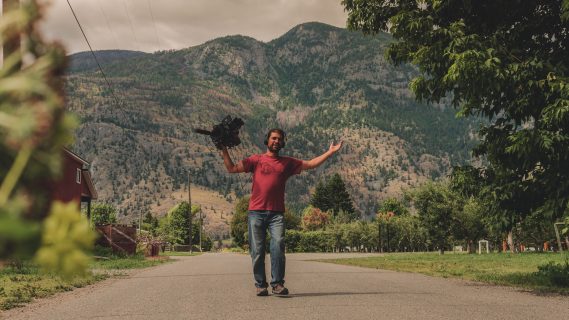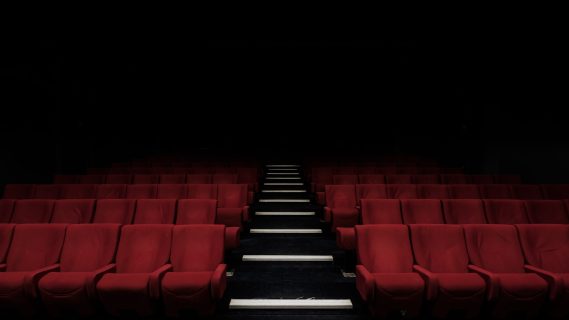Podcasting in the COVID-19 Pandemic
Canada has adopted economic measures to deal with the COVID-19 pandemic that are compelling the media industry to rethink its business models and processes. Podcasting is no exception. However, the sector is getting by. So, when you factor in the lockdown, working from home, and changes in listening habits, what will the impact of COVID-19 be on podcasting?
Creativity first and foremost
The media industry is certainly not immune to the economic crisis sweeping the country. Although it’s premature to paint a precise picture of the situation just yet, the tsunami of pay cuts and layoffs in media organizations indicates a level of trauma that will be very difficult to recover from.
For its part, the still budding and relatively agile podcasting sector reacted to the pandemic with a healthy burst of creativity right from the start. Without missing a beat, podcasters pumped out a veritable explosion of audio content even before the lockdown finally took hold.
Across the board, there was a clear shift from daily news podcasts to podcasts with a heavy pandemic focus. That’s certainly been the case with ‘Ça s’explique’ at Radio-Canada, ‘Front Burner’ at CBC, ‘The Daily’ at The New York Times, and ‘En 5 minutes’ on QUB radio. Elsewhere in the world, an endless stream of podcasts has also been produced with the sole objective of covering the pandemic’s evolution. Simply tune in to NPR, ABC, BBC, France Inter, or even The Atlantic for more of the same.
As COVID-19 coverage continues to suck all the oxygen out of the room, not only are conventional media transforming their formats to up the pandemic ante (and enjoying huge surges in online traffic for their efforts), but a number of new French-language productions have also joined the fray.
With ‘Confinés mais ensemble’ (Radio-Canada), ‘Connecté.e.s’ (independent), and ‘Ça va tu?’ (independent), you can delve into the personal stories and experiences of others in lockdown. In more niched podcasts like ‘La sentinelle’ (Culture cible and Cactus production sonore), you get to meet major players in the cultural sector, while ‘Comment ça va, toi?’ (Kollectif) looks at the impact of the pandemic from the perspective of those working in architecture. Finally, with ‘Signal nocturne’ (La Fabrique culturelle and Transistor média) and ‘Les mains propres’ (CHOQ), the lockdown is transformed into an opportunity for sampling new audio creations, theatre, and poetry.
With schools and daycares also on the lockdown list, there are plenty of newcomers making their mark in youth podcasting, with audience numbers to prove it. According to Podtrac, the number of “Children and Family” podcasts downloaded is up 9 percent, while the range of podcasts for kids has never been greater, says The New York Times. Never one to miss an opportunity, Spotify made the most of the lockdown to launch its Spotify Kids app in selected countries, including Canada.
In the United Kingdom, the BBC acquired broadcasting rights to the daily ‘Fun Kids’ podcast and has added it to the BBC Sounds platform’s roster. In Quebec, Radio-Canada did the same by acquiring broadcast rights to the catalogue of La puce à l’oreille, a production company that’s currently making waves with a special COVID-19 audio series as well as with suggestions for parents desperately seeking options for keeping children under lockdown entertained.
The ‘System D’ way: doing it yourself
The creative effervescence is partly due to the nature of the medium itself. With minimal equipment and plenty of remote recording, crews are able to produce quality content while staying well within mandated social distancing guidelines. Domestically, studios like Magnéto, Récréation, and Pacific Content wasted no time in letting users know that their production capacity would barely be impacted, if at all, by the pandemic. What’s their secret? Using built-in recording devices on guests’ mobile phones for the most urgent projects. For better quality, they mail them a USB mic and then remotely help with the technical set-up. France’s Louie média opts for voice memos instead. The idea is to integrate segments that guests record themselves on their phones.
The quantum leap to remote work can be a real challenge for some sectors. For both radio and podcasts, production crews with a good mic, recording device, and editing software, have a degree of agility that serves them well in pandemic situations, especially when using remote studio facilities.
Housed in the closet and under blankets, home studios have become the norm for professionals and amateurs alike. Even Ira Glass (This American Life) has gotten into it.
Recording this week’s show (well, I closed the closet doors while I read my narration). @ThisAmerLife pic.twitter.com/SrTO0hsgyz
— Ira Glass (@iraglass) March 22, 2020
In the United States, The New York Times reports that the lockdown has led to a proliferation of privately produced daily coronavirus information podcasts, normally a demanding format that only major media could once consider.
This same resourcefulness has made its way online, where you’ll find tons of tutorials with tips and tricks for setting up a studio at home, getting the sound right when recording remote interviews, or implementing pandemic-proof hygienic guidelines when you’re out in the field.
So, are people actually listening to more podcasts?
The question on everyone’s mind is whether or not the lockdown has caused an uptick in podcast consumption. While it’s still too early to tell for sure, three trends are beginning to emerge.
COVID-19 news podcasts seem to be benefitting from the global media storm created to meet consumer demand for information on the pandemic. Vox Media in the U.S. recently reported that the download rate for its podcasts is up 50 percent on average, with audience ratings for its ‘Today, Explained’ news podcast also noticeably higher. The stats are much the same at Slate, with a 47 percent increase in downloads related to coronavirus coverage.
Listening habits do remain in a state of flux. Even though the global audience for podcasts has been on the rise since January, there has been a slowdown in downloads since mid-March, according to Podtrac. Fiction and podcasts about television and film are among the fastest growing categories, with sports podcasts among those losing ground.
Audiences in lockdown appear to be swapping their phones in favour of online podcasts. Podigee, Germany’s leading podcast hosting platform, reported that online consumption has nearly doubled in recent weeks, a sign that those staying at home could be listening more on computers and other devices than on their mobiles. Of course, the decrease in commute time is partly to blame, with podcasts now being downloaded later in the day during the week.
The COVID-19 pandemic is shaking media organizations to their cores, simultaneously tasking them with managing a full-blown crisis and preparing their own business recovery plan. While the podcasting sector is not immune to the impact of the virus, it has been able to adapt more easily to the constraints, thanks in part to the simplicity of the medium.
And as we all wait for an opportune time to really take stock of the situation, those in lockdown can seek solace in the calming natural ambience they’ll find on Soundscapes or Field recordings.



